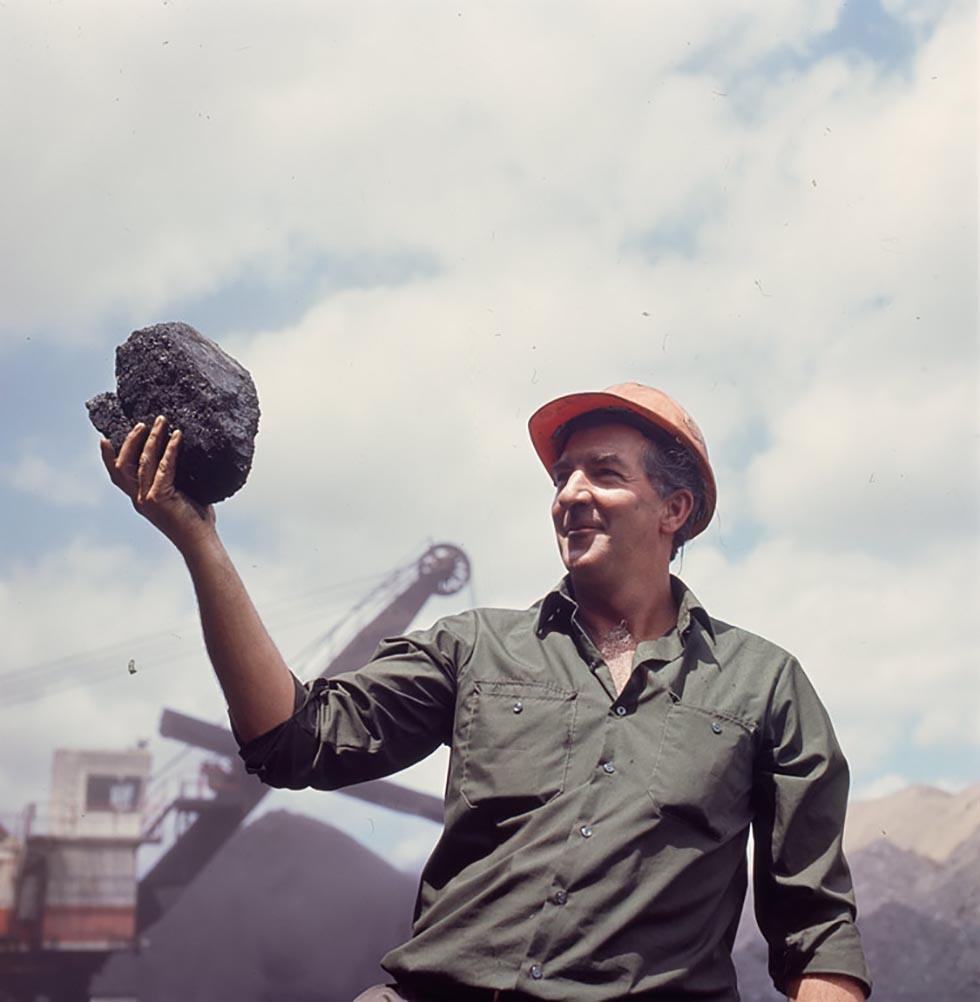


About this record
This is a colour photograph of a miner at the Peak Downs open-cut coal mine in north-eastern Queensland in 1977. The miner is shown in the foreground, wearing a safety helmet and holding up a large piece of coal in his right hand. In the background, the dragline bucket system is visible in front of mounds of extracted coal.
Educational value
- The photograph was taken at the Peak Downs Mine, 30 kilometres south of Moranbah and 195 kilometres south-west of Hay Point, where black coal is mined by the open-cut (or surface) method in which coal is extracted from just below the earth's surface using purpose-built equipment. The mine began operation in 1972 and had the capacity to produce in excess of 9 million tonnes of coking coal each year. Coal is Australia’s largest commodity export and further contributes to the Australian economy by providing regional employment and low-cost energy.
- The large rock of coal in the miner’s hand is an example of black (or sub-bituminous) coal, also known as hard coking coal. Black coal is a sedimentary organic rock consisting of anthracite, bituminous and sub-bituminous coals. Queensland is rich in deposits of hard coking coal, which fetches high prices because it is used in steel making. Black coal signifies the final stages in the formation of coal in the transformation from plant material to carbon, and is lower in moisture than brown coal, providing more efficient heat.
- The photograph shows part of the dragline bucket system commonly used in the excavation of coal from open-cut mines. Draglines (large mobile bucket excavators) are used to remove the overburden before excavators extract the coal to load into coal haulers and trucks for transport, treatment and then export. Today Peak Downs uses six draglines and a fleet of trucks, power shovels and coal haulers in their operations.
- This photograph was taken for the Australian Information Service (AIS), a Commonwealth agency established in 1973 to promote the Australian lifestyle and notable events internationally through the creation of media and public relations material. As well as promoting people and events it also presented industry and agriculture. The AIS originated from the Department of Information and has become the International Public Affairs Branch of the Department of Foreign Affairs and Trade.
- Although the pictorial composition and pose of the miner in this photograph suggest that it was taken to promote successful activities at Peak Downs, 1977 was also a time when industrial unrest had an effect on the mine. During that year, a strike led by the Seamen’s Union affected the shipping of coal from its Hay Point loading port. Tugboat crews refused to operate the tugs in a failed attempt to increase the percentage of Australian-crewed ships used for exporting coal.
Acknowledgments
Learning resource text © Education Services Australia Limited and the National Archives of Australia 2010.
Need help with your research?
Learn how to interpret primary sources, use our collection and more.

